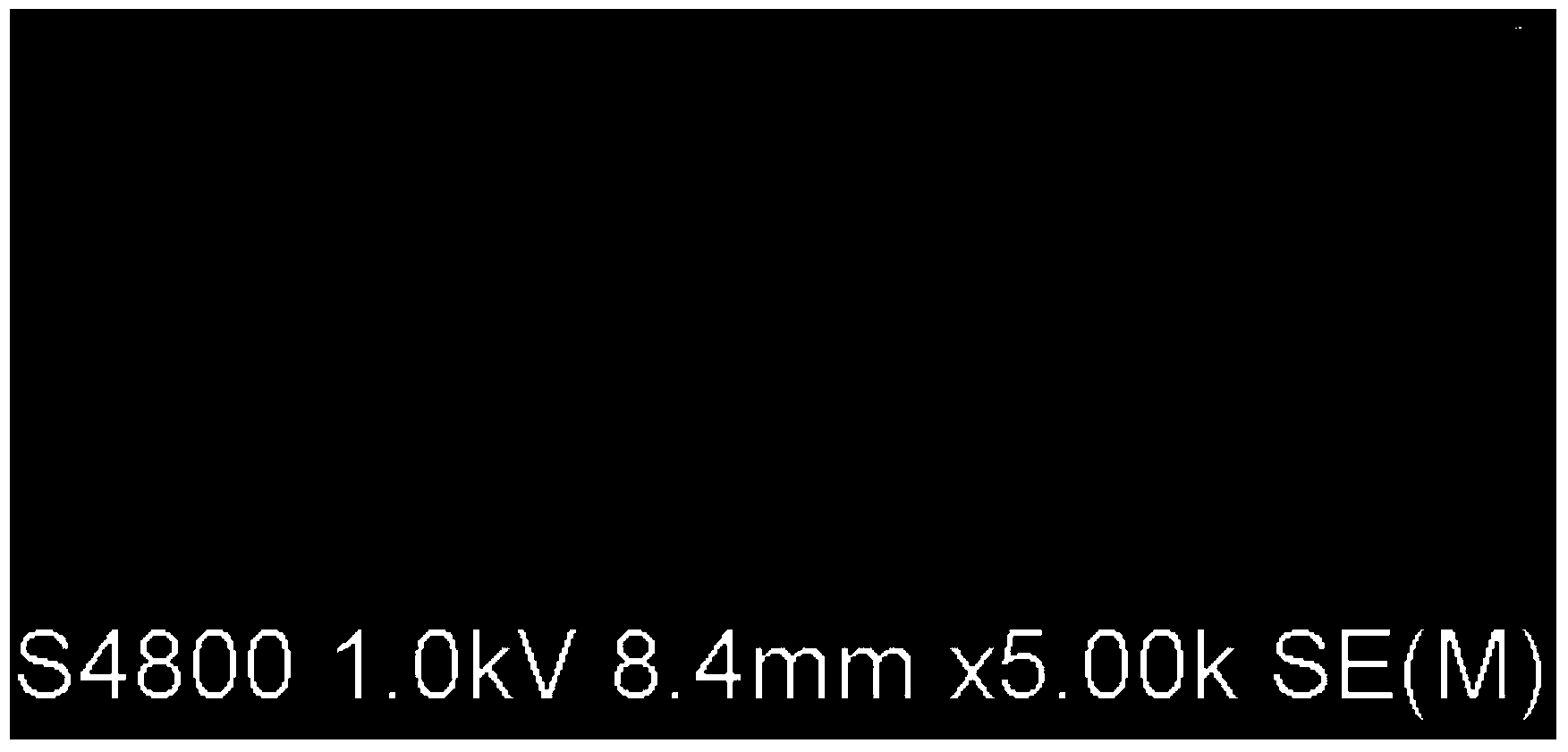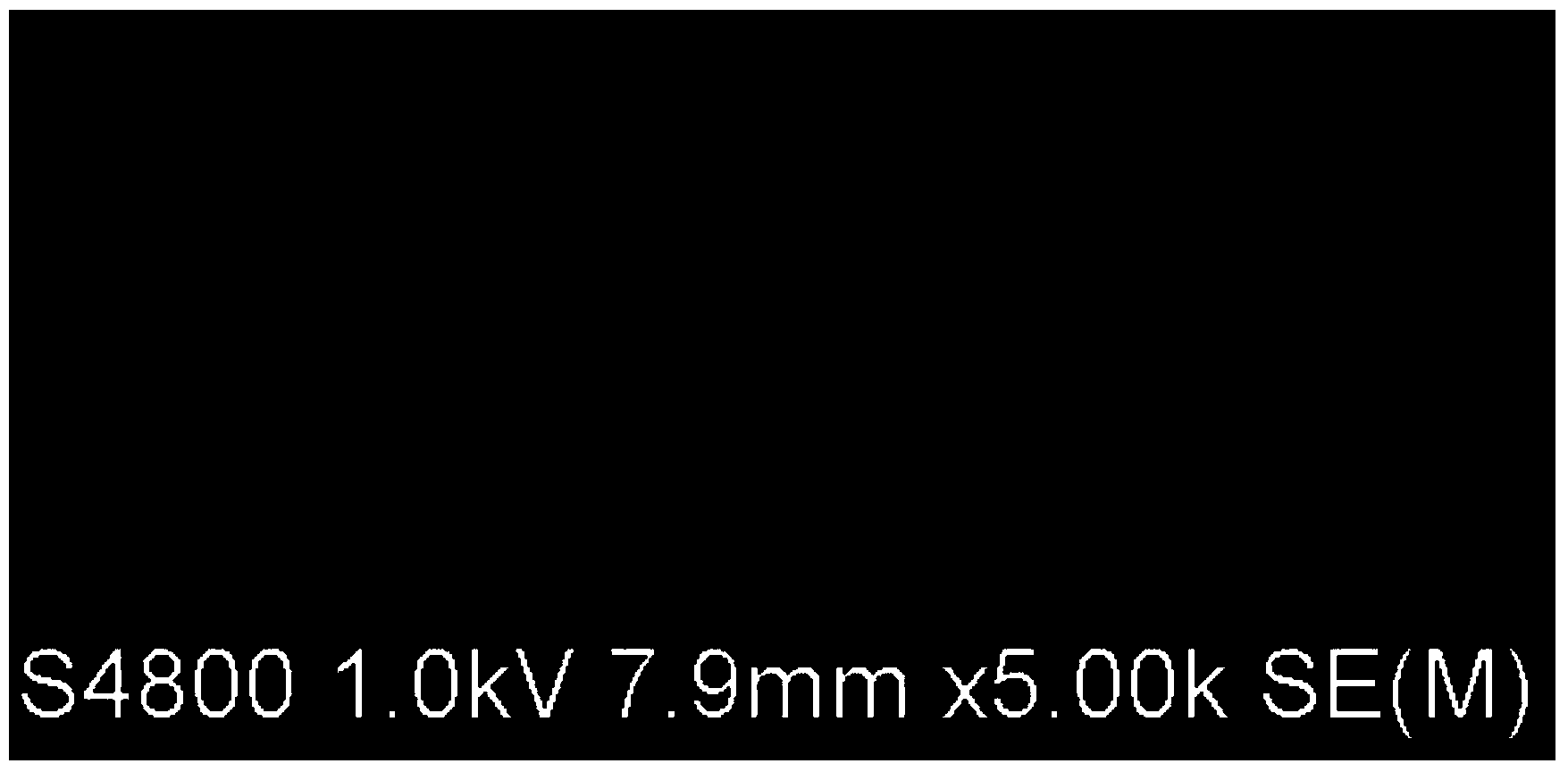Micro-fluorine glass etching and polishing method
A technology of etching and polishing and micro-fluorine glass, which is applied in the field of glass etching and polishing and micro-fluorine glass etching and polishing, to achieve the effects of high safety, fast etching rate and large depth
- Summary
- Abstract
- Description
- Claims
- Application Information
AI Technical Summary
Problems solved by technology
Method used
Image
Examples
example 1
[0016] Sodium fluoride (inorganic salt 1) and sodium sulfate (inorganic salt 2) were ground separately, and then mixed with sodium dihydrogen phosphate and water in a weight ratio of 10:8:1:1 to prepare an etching solution. Then apply the etchant to the pretreated glass. After standing at 25°C for 1 hour, the glass surface was cleaned. The surface morphology was observed by scanning electron microscope. Pretreatment steps: ultrasonic washing (low frequency) - acid washing (mixture of dichromic acid and sulfuric acid in any proportion) - immersion in organic solvent acetone for 3 minutes - distilled water washing - heating - sticking a protective layer.
[0017] Such as figure 1 , It was found that the etching surface was uneven, the surface was whitish, there was side etching, and the etching depth was very small.
[0018] Experimental data: 17.4801 grams before etching and 17.4431 grams after etching
[0019] Erosion depth: m before etching - m after etching = 17.4801-17...
example 2
[0021] ① Grind sodium fluoride and sodium sulfate separately, and make an etching solution with sodium dihydrogen phosphate, water and starch (to adjust the viscosity of the solution) in a ratio of 10:8:1:1:5, and then mix the etching solution Apply to pre-treated glass. After standing at 28OC for 1 hour, the glass surface was cleaned. The surface morphology was observed by scanning electron microscopy, such as figure 2 .
[0022] Experimental data: 17.0375 grams before etching; 17.4063 grams after etching;
[0023] Erosion depth: m before etching - m after etching = 17.0375-17.4063 = 0.0375;
[0024] ②Grind sodium fluoride and sodium sulfate separately, and make an etching solution with sodium dihydrogen phosphate, water and starch (to adjust the viscosity of the solution) in a ratio of 10:8:1:6:5, and then mix the etching solution Apply to pre-treated glass. After being placed at 28OC for 1 hour, the glass surface was cleaned and its surface morphology was observed wit...
example 3
[0029] ①After grinding sodium fluoride and sodium sulfate separately, make etching solution with sodium dihydrogen phosphate, water, and active agent sodium tetraborate in a ratio of 10:8:1:1:5, and then apply the etching solution on the pretreatment After the good glass is placed at 28OC for 1 hour, the glass surface is cleaned. The surface morphology was observed by scanning electron microscopy, such as Figure 4 .
[0030] Experimental data: 17.2908 grams before etching; 17.1773 grams after etching;
[0031] Erosion depth: m before etching - m after etching = 17.2908-1773 = 0.1135;
[0032] ②Grind sodium fluoride and sodium sulfate separately, and make an etching solution with sodium dihydrogen phosphate, water, and active agent sodium tetraborate at a ratio of 10:8:1:6:5, and then apply the etching solution on the pre- Treated glass. After standing at 28OC for 1 hour, the glass surface was cleaned. The surface morphology was observed by scanning electron microscopy, s...
PUM
 Login to View More
Login to View More Abstract
Description
Claims
Application Information
 Login to View More
Login to View More - R&D
- Intellectual Property
- Life Sciences
- Materials
- Tech Scout
- Unparalleled Data Quality
- Higher Quality Content
- 60% Fewer Hallucinations
Browse by: Latest US Patents, China's latest patents, Technical Efficacy Thesaurus, Application Domain, Technology Topic, Popular Technical Reports.
© 2025 PatSnap. All rights reserved.Legal|Privacy policy|Modern Slavery Act Transparency Statement|Sitemap|About US| Contact US: help@patsnap.com



